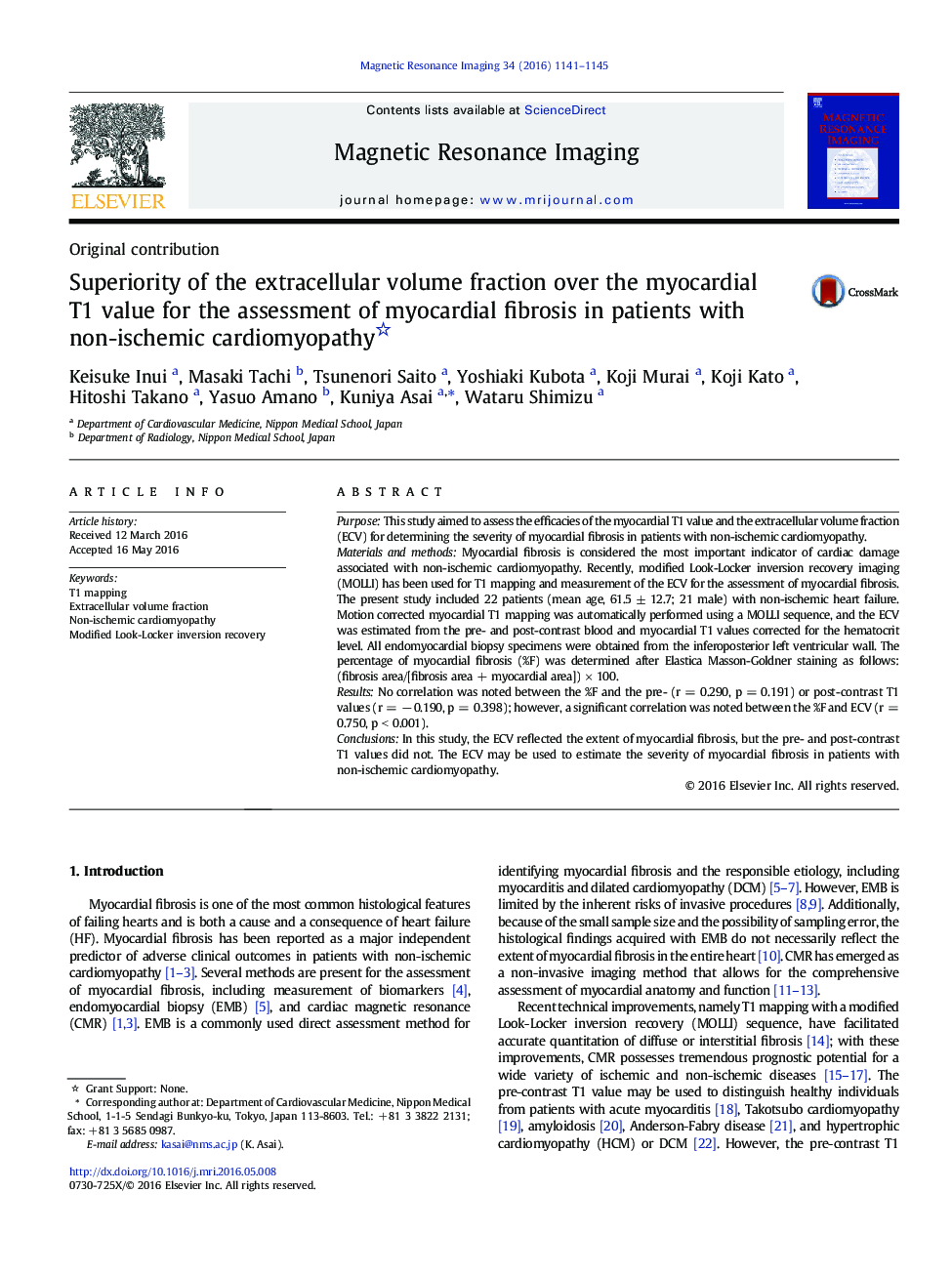| Article ID | Journal | Published Year | Pages | File Type |
|---|---|---|---|---|
| 1806119 | Magnetic Resonance Imaging | 2016 | 5 Pages |
PurposeThis study aimed to assess the efficacies of the myocardial T1 value and the extracellular volume fraction (ECV) for determining the severity of myocardial fibrosis in patients with non-ischemic cardiomyopathy.Materials and methodsMyocardial fibrosis is considered the most important indicator of cardiac damage associated with non-ischemic cardiomyopathy. Recently, modified Look-Locker inversion recovery imaging (MOLLI) has been used for T1 mapping and measurement of the ECV for the assessment of myocardial fibrosis. The present study included 22 patients (mean age, 61.5 ± 12.7; 21 male) with non-ischemic heart failure. Motion corrected myocardial T1 mapping was automatically performed using a MOLLI sequence, and the ECV was estimated from the pre- and post-contrast blood and myocardial T1 values corrected for the hematocrit level. All endomyocardial biopsy specimens were obtained from the inferoposterior left ventricular wall. The percentage of myocardial fibrosis (%F) was determined after Elastica Masson-Goldner staining as follows: (fibrosis area/[fibrosis area + myocardial area]) × 100.ResultsNo correlation was noted between the %F and the pre- (r = 0.290, p = 0.191) or post-contrast T1 values (r = − 0.190, p = 0.398); however, a significant correlation was noted between the %F and ECV (r = 0.750, p < 0.001).ConclusionsIn this study, the ECV reflected the extent of myocardial fibrosis, but the pre- and post-contrast T1 values did not. The ECV may be used to estimate the severity of myocardial fibrosis in patients with non-ischemic cardiomyopathy.
